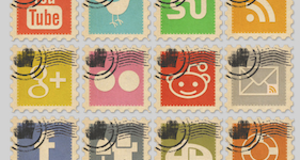Effects of the "Spiral of Silence" in Digital Media
By
2015, Vol. 7 No. 09 | pg. 1/2 | » Since its introduction by German-born Political Scientist Elizabeth Noelle-Neumann in 1974, the Spiral of Silence theory has become one of the most-researched communication theories that explains public opinion formation in a media environment (McDonald, Glynn, Kim, & Ostman, 2001, p. 139). The Spiral of Silence attempts to explain how media consumption, interaction among key groups, and opinion expression all interact to form opinions in society. Over time, a "spiraling" effect will occur, in which a dominant opinion becomes more visible over one or more minority opinions. When initially proposed by Noelle-Neumann, the theory helped to explain face-to-face interactions in the media that helped to form public opinion (Gearhart & Zhang, 2014, p. 20). However, with the exponential growth of digital media, the theory has recently been applied to digital interactions as well (Ho, Chen, & Sim, 2013, p. 117). Since today's media environment is undergoing continual refinement at rapid speeds, researchers are able to find new ways to apply the theory. Although scholars remain divided as to whether the theory's "spiraling" effect is applicable to today's digital media environment, the theory nonetheless remains influential because it has been studied today more so than in previous years. The internet, particularly social media, has opened new research avenues for scholars who want to conduct efficient and cost-effective studies involving multiple countries. Regardless of whether the theory is applied to traditional or digital media, communication scholars can agree that the theory makes important contributions towards explaining individual behavior and attitudes arising from media consumption (Scheufele & Moy, 2000, p. 8). In particular, when the theory is closely studied, it reveals that public opinion is neither transitory nor random (Glynn & McLeod, 1984, p. 731). In today's partisan media environment, consumers are exposed to a wide variety of different media stories. The ideological identities of these stories are just as diverse as the way they are expressed. However, despite the differing partisan lenses on a given issue, consumers may not be able to perceive rational arguments on each political spectrum in an objective manner. Thus, a troubling question can arise: are consumers missing important information that could completely change their viewpoints on a given issue? (Kennamer, 1990, p. 39). If this question were applied to the Spiral of Silence, the "spiraling" process could essentially be overturned, thus reversing a deeply-embedded public opinion.Literature ReviewThe Spiral of Silence was first proposed by Elizabeth Noelle-Neumann in 1974. Drawing from her experience in the 1965 German national elections between the Christian Democrats and Social Democrats, Elizabeth Noelle-Neumann found that the two parties were running neck-and-neck. According to national polls, the Christian Democrats were expected to win. When the Christian Democrats won, it was by a margin close to the poll predictions. Thus, Noelle-Neumann's wondered: "How could the expectation of a Christian Democratic victory increase steadily when actual voting intentions remained unchanged and the published survey results only indicated that there was going to be a neck-and-neck race?" (Kennamer, 1990, p. 394). The Four Main Parts of the "Spiral of Silence"When the theory was first proposed in 1974, Noelle-Neumann sought to explain how one's opinion depends on the opinion of others around them (Glynn & McLeod, 1984, p. 731; Glynn, Hayes, & Shanahan, 1997, pp. 452-453; Kennamer, 1990, p. 390; Neuwirth, Frederick, & Mayo, 2007, p. 450). Specifically, she explained the interplay behind how trends gain public support (Kim, Kim, & Oh, 2014, p. 714). Combining Noelle-Neumann's extensive descriptions of the theory, the Spiral of Silence key tenets can be summarized into four propositions. These propositions are: (1) there is a "quasi-statistical" organ that people use to monitor the prevailing opinion; (2) public opinions trigger a "spiraling" process that reveals the majority opinion; (3) those individuals or groups who voice minority opinions are threatened with social isolation; and (4) future opinion dictates the likelihood of one voicing their opinion in public. Proposition #1: The "quasi-statistical" organ.The first proposition by Noelle-Neumann posits that each individual has a "quasi-statistical" organ to monitor the prevailing opinion on a given issue (Noelle-Neumann, 1974, pp. 44-45; Noelle-Neumann, 1979, p. 147). Noelle-Neumann (1984) outlined how this sense functions when she wrote, "…to read what are, and what are not, socially acceptable views and behaviors in any given situation" (p. 179). In other words, the easiest way to find the dominant opinion is to find it displayed in public. The "quasi-statistical" sense tells us that social interaction is at the heart of the theory (Taylor, 1982, p. 314). Humans are, for the most part, sensitive to the opinions of others (Lang & Lang, 2012, p. 368). Humans want to be well-liked by their peers and will tend to avoid performing acts that will lead to peer alienation. However, it can be argued that this dominant opinion must be displayed repetitively in the media and in real-life, as there are isolated incidents (such as crimes) that may be displayed in isolated areas with little or no threats of social isolation. Monitoring the dominant opinion can take several forms, including media coverage, environmental observation, or interpersonal discussion of the issues (Gozenbach, 1994, p. 4). Several researchers, including Noelle-Neumann herself, have argued that the news media is the most important way for people to use their "quasi-statistical" senses to determine the dominant opinion (Gearhart & Zhang, 2014, p. 20; Gozenbach & Stevenson, 1994, pp. 12-14; Ho, Chen, & Sim, 2014, p. 117; Lang & Lang, 2012, p. 372; Malaspina, 2014, p. 7; Nekmat & Gozenbach, 2013, p. 738; Noelle-Neumann, 1974, p. 50). This is a reasonable proposition, as virtually everyone has been exposed to the news media. Of course, the media does not consist solely of the mass news media, as books, movies, television shows, and popular music can collectively qualify as "media." Additionally, in today's digital media society, the mass media is arguably more prevalent, as media can be created, distributed, and analyzed much quicker than before. Not surprisingly, researchers such as Ho et. al (2013) have found that those with more media exposure are more likely to voice their opinion in public (pp. 123-124). Once again, this is a reasonable assumption, as exposure to different types of information on a given issue will encourage vigorous debate. There are a few ways that an individual can tell that they are using their "quasi-statistical" sense to determine public opinion. First of all, an individual is usually aware of the social norms that elicit widespread agreement on values and goals (Noelle-Neumann, 1991, p. 258; Malaspina, 2014, p. 7; Putnam, 1995, pp. 664-665). This certainty arises from how the controversial nature of the issue at hand is actively being debated (Kim et. al, 2014, p. 721). In fact, not only is the issue always controversial, but it is usually "morally-loaded" as well (Gozenbach & Stevenson, 1994, p. 4; Moreno-Riaño, 2002, p. 66; Noelle-Neumann, 1993, p. 2000). Of course, when there is a strong moral component to the issue, tempers will flare on both sides of the issue, thereby increasing public awareness and the individual "quasi-statistical" organ. Among numerous other topics, previous studies have examined approval of political candidates (Glynn & McLeod, 1984; Malaspina, 2014; McDonald et. al, 2001), children with AIDS attending school (Gozenbach & Stevenson, 1994), gay bullying (Gearhart & Zhang, 2014), and genetically-modified foods (Kim et. al, 2014). Since one of the main components of the theory is that the issue must be controversial and morally-loaded, the media can play a role in exacerbating this effect by appealing to audience emotions, as opposed to logical facts. Indeed, in existing literature on the theory, majority opinions can be over-exaggerated (Gozenbach & Stevenson, 1994, p. 8; Neuwirth et. al, 2007, p. 450; Taylor, 1982, p. 311). The "looking-glass phenomenon" is one theory that posits that people have the tendency to believe that others agree with them (Neuwirth, 1995, p. 37; Scheufele & Moy, 2000, p. 9; Taylor, 1982, p. 312). Conversely, another theory is "pluralistic ignorance," which posits that people in the minority may be so vocal about their views that people may begin to think that their opinions are within the majority (Scheufele & Moy, 2000, p. 9; Taylor, 1982, p. 312). Second, the "quasi-statistical" sense is aided in part by the media. In any media climate where the theory has been tested, the media always takes a direct, unequivocal stand on a given issue (Moreno-Riaño, 2002, p. 66; Scheufele & Moy, 2000, p. 9). The media does not necessarily reflect the views of society as a whole, but it can give people the impression that it does due to its paternalistic nature. This paternalism gives people the impression that a particular view is correct, as some outlets are more vocal and more prevalent than others. With this in mind, we might be able to say that we should be more concerned about whether or not we want to follow the views of the American mainstream media system. This, in fact, could be the new definition of "attitude certainty" on a media issue. Of course, given the nature of partisan media, each outlet will frame the issue differently. Regardless of which outlet is studied, however, the issue is usually not difficult to discern. Differing opinions within a media outlet are not uncommon, however, the arguments must be distinct and recognizable. The media influences public opinion by not telling us what to think, but rather, what to think about (Carpentier, 2014, pp. 2-3; Denham, 2014, p. 18; Petty & Cacioppo, 1984, p. 69). Thus, when we are not forced to take a particular stand on an issue, this will one of the hallmarks of the theory to take root: robust debates. Proposition #2: Public opinion and the "spiraling" process.Elizabeth Noelle-Neumann's second proposition examines the role of public opinion and the interplay of popular opinions in the "spiraling" process. Noelle-Neumann (1974) defined public opinion as a method of popularity when she wrote: "… public opinion is the opinion which can be voiced in public without fear of sanctions and upon which action in public can be based" (p. 44). On a larger scale, public opinion can be defined as the sum of private opinions that are voiced without fear of retribution or reprisal (Taylor, 1982, p. 312). Keep in mind that these opinions are expressed and does not include the opinions that are not expressed (Nekmat & Gozenbach, 2013, p. 736; Taylor, 1982, p. 316). One of the theory's hallmarks is that it encourages individuals who hold a minority opinion to remain silent. However, when determining whether the issue was perceived correctly in the first place, these unexpressed opinions could nullify a part of this theory. When opinions are not expressed, they don't allow for a diverse mix of opinions to take root, thus making the theory more of a "popularity contest" than anything. Noelle-Neumann is the first to admit that it is better to for one to isolate themselves than to hold on to their opinion (Glynn, Hayes, & Shanahan, 1997, p. 453). For example, if one were not to voice a fairly unpopular opinion that was supported with statistics prior to the "spiraling" process, the more popular post-"spiraled" opinion would not address the unpopular opinion with statistics. From a logical point of view, the popular opinion would not be strong, but because the opinion is popular, the public will be attracted to it. It is important to keep in mind that the "spiraling" process views opinions as "popular" and "expressed," they are not necessarily "right" or "wrong" (Lang & Lang, 2012, p. 381; Noelle-Neumann, 1994, p. 6). This is the case for two reasons. First, in the pre-"spiral" stage the issues are still being debated and no consensus has been reached. Second, even after the minority opinion has been determined, there will still be adherents to that issue that believe the minority opinion is morally-correct. For example, U.S. pro-life activists still believe abortion to be morally-wrong, even though abortion has been legal in the U.S. since 1973. One of the strengths of the theory is that it states that public opinion will determine whether or not people will speak out (Taylor, 1982, p. 311). In the U.S. (where the theory has been frequently-tested) and in Germany (where the theory originated), democracy is an important concept when popular opinion is considered. Robust arguments and public deliberation are a hallmark of the democratic process. People will not only state their opinion, but will use logical supporting evidence. Even if parties do not agree with another party's opinion, they are obliged to respect the logical strength of their opinion reasoning (Ho et. al, 2013, pp. 113-115). The "spiraling" process is the hallmark of the theory, defined by Noelle Neumann (1974) as a "…process which increasingly establishes [a dominant] opinion as the prevailing one" (p. 44). When this happens, the opinions displayed by the ideological minority is pushed to the bottom by the majority opinion. Thus, over a long period of time, a perception develops among society that there is a collective opinion held by the majority of society (Glynn & McLeod, 1984, p. 732; Nekmat & Gozenbach, 2013, p. 737; McDonald et. al, 2001, p. 140; Scheufele & Moy, 2000, p. 9). The "spiraling" metaphor is strong, as it appears that the majority opinion is at the top of a "cork-screw," "screwing-down" deviant opinions until they are effectively invisible. Similarly, the dominant opinion could be like the smoke rising from the fires of infighting between the majority and minority opinions. This second conceptualization not only recognizes a highly-visible opinion and the discontent before a majority opinion prevails, but the fact that minority opinions will become condensed at the bottom. When these minority opinions are condensed, they can find support for one another, thus validating the theory's claim that deviant opinions do not disappear outright. Proposition # 3: Threat of isolation.After the spiraling process has finished, the majority opinion appears, compelling people to follow it (Noelle-Neumann, 1979, p. 144). Many researchers have found that an individual will likely express an opinion if it has social support and vice-versa (Glynn & McLeod, 1984, pp. 731-732; Ho, Chen, & Sim, 2013, p. 119; Kennamer, 1990, p. 395; Noelle-Neumann, 1974, p. 44; Scheufele & Moy, 2000, p. 9; Taylor, 1982, p. 311). This obligation to follow the majority opinion has been conceptualized as "social control," thus necessitating the need for self-censorship (Gearhart & Zhang, 2014, p. 19; Malaspina, 2014, p. 7). This may not be the best conceptualization because, going back to the first proposition, public opinion is heavily-influenced by the media. The media, of course, does not tell people what to think, but what to think about. This is true in democracies, such as the U.S. and Germany. Nonetheless, if an individual voices an opinion contrary to the prevailing opinion, they will face isolation (Noelle-Neumann, 1974, p. 44). Much of this isolation has been conceptualized as a threat imposed by society as a whole (Noelle-Neumann, 1991, p. 258). However, Moy, Domke, & Stamm (2001) have disagreed with this proposition, explaining that the threat of isolation comes from an individual's reference groups (such as friends, family, neighbors, and coworkers) that they associate with on an everyday basis (p.8). This is a reasonable proposition, as not everyone within society can support or condemn an individual for expressing a particular opinion (Glynn & McLeod, 1984, p. 738; Moy, Domke, & Stamm, 2001, p. 18). With the rise of digital media, globalized society is now more connected than ever, giving people the impression that all of society is together on the internet. As such, there may be a threshold of opinion—enough outside groups to support or condemn an opinion. This is why media consumption is important in today's study of the theory, as the media can give an audience the impression that there is more or less consensus on an issue than there really is. Proposition #4: The likelihood of opinion expression.The fourth proposition states that the future opinion on an issue dictates the likelihood of an individual exposing their opinion in public (Noelle-Neumann, 1974, p. 45). In general, the prevailing opinion is likely to stand as firm as it will in the future (Gozenbach & Stevenson, 1994, p. 4; Ho, Chen, & Sim, 2013, p. 119; Lang & Lang, 2012, p. 368; Malaspina, 2014, p. 7; Nekmat & Gozenbach, 2013, p. 737). This likely owes to the previous proposition because, when people make a habit of advocating or condemning a particular opinion in public, the surge of onlookers creates intense pressure to maintain the status quo. However, a "hardcore" individual or group may express their opinion anyways and not care about whether their opinion is lambasted by society (Gearhart & Zhang, 2014, p. 20; Glynn & McLeod, 1984, pp. 732-733; Ho, Chen, & Sim, 2013, p. 123). While the "hardcore" variable may suffer from an egocentric bias, there is no denying that they will be less-affected by the Spiral of Silence (Judd & Johnson, 1981, p. 26; McDonald et. al, 2001, p. 140). Lang & Lang (2012) have praised the "hardcore" because they think strategically in the sense that they accomplish their goals, as opposed to becoming distracted by social opinion (p. 376). The "hardcore" variable is important because it proves that social isolation is not a universal fear (Kennamer, 1990, p. 402; Malaspina, 2014, p. 8). The "Spiral of Silence" in Digital MediaToday's shift into highly-interactive digital media was alluded to by Noelle Neumann during the theory's early years, but never really explored until the mid-1990s (Kim et. al, 2014, p. 731; Noelle-Neumann, 1974, p. 50). In today's media environment, not only are media consumers bombarded with news media, but they can also create their own news media as well. Digital media is extremely popular—in 2012, 65% of all internet users and 87% of users under the age of 30 used social networking sites (Gearhart & Zhang, 2014, p. 18). Compared to previous generations, the media presence of ordinary people was almost unheard of, unless an individual was invited to speak on TV or radio shows. With many new voices pervading the media landscape, this significantly changes the inherent dynamics of the Spiral of Silence. The Spiral of Silence's application to social networking sites has frequently been researched in recent years. According to Boyd & Ellison (2007), social networking sites embody three characteristics: (1) they construct public or semi-public profiles within a bounded system; (2) show a list of others they frequently share a connections with; and (3) view and traverse those connections, as well as those made by others (p. 211). For the most part, most people with a social networking site already know the people on their "friends list" (Gearhart & Zhang, 2014, p. 19). This fact has important implications for what force drives the Spiral of Silence. If most people already know each other in cyberspace, this would suggest that the threat of silence comes from reference groups, as opposed to society as a whole. In particular, reference groups would be able to logically discern an individual's unique ideology to promote or oppose the individual's opinion. It has been argued by a number of researchers that the "silencing" effect may not be evident in digital media interactions. Nekmat & Gozenbach (2013) have argued that there are three different climates of opinion within digital media: (1) the offline climate of opinion, which is the perceived opinion in the real-world; (2) an online climate of opinion; and (3) a within-forum climate of opinion reflecting the diverse views inherent within forum participants (p. 737). This third aspect is particularly important because people may be expressing their views to their reference groups, as opposed to society as a whole. As such, these reference groups would likely be the group endorsing or "silencing" an individual's opinion expression, as opposed to society as a whole.Continued on Next Page » Suggested Reading from Inquiries Journal
Inquiries Journal provides undergraduate and graduate students around the world a platform for the wide dissemination of academic work over a range of core disciplines. Representing the work of students from hundreds of institutions around the globe, Inquiries Journal's large database of academic articles is completely free. Learn more | Blog | Submit Latest in Business & Communications |


















